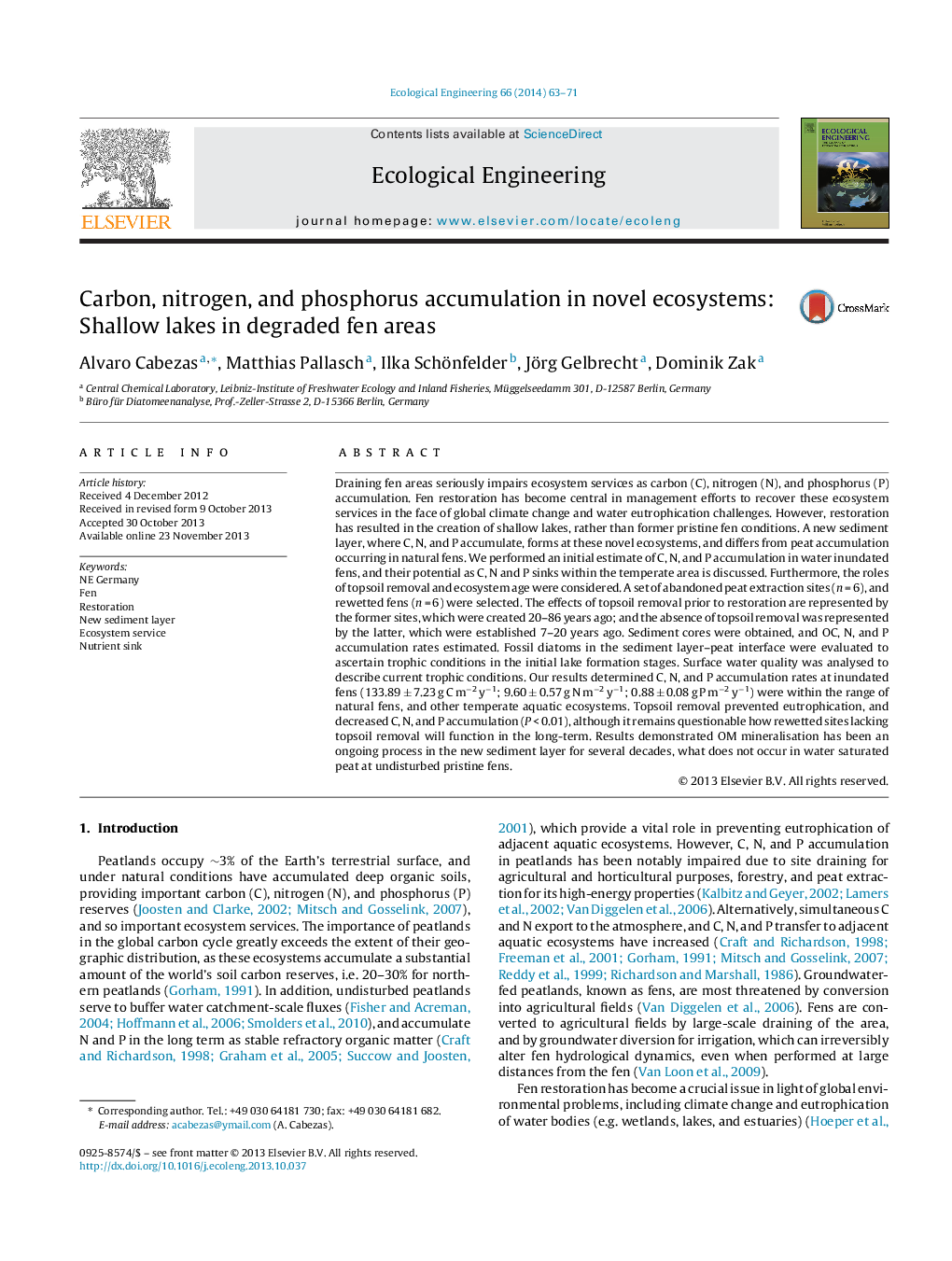| Article ID | Journal | Published Year | Pages | File Type |
|---|---|---|---|---|
| 4389539 | Ecological Engineering | 2014 | 9 Pages |
•C, N, and P accumulate at inundated fens in a newly formed sediment layer.•C, N, and P accumulation rates at inundated fens are within the range of natural temperate fens.•Topsoil removal prevents eutrophication, and so decreased C, N, and P accumulation.•OM mineralisation is an ongoing process in the new sediment layer.•Nutrient fluxes from the new sediment layer must be further evaluated.
Draining fen areas seriously impairs ecosystem services as carbon (C), nitrogen (N), and phosphorus (P) accumulation. Fen restoration has become central in management efforts to recover these ecosystem services in the face of global climate change and water eutrophication challenges. However, restoration has resulted in the creation of shallow lakes, rather than former pristine fen conditions. A new sediment layer, where C, N, and P accumulate, forms at these novel ecosystems, and differs from peat accumulation occurring in natural fens. We performed an initial estimate of C, N, and P accumulation in water inundated fens, and their potential as C, N and P sinks within the temperate area is discussed. Furthermore, the roles of topsoil removal and ecosystem age were considered. A set of abandoned peat extraction sites (n = 6), and rewetted fens (n = 6) were selected. The effects of topsoil removal prior to restoration are represented by the former sites, which were created 20–86 years ago; and the absence of topsoil removal was represented by the latter, which were established 7–20 years ago. Sediment cores were obtained, and OC, N, and P accumulation rates estimated. Fossil diatoms in the sediment layer–peat interface were evaluated to ascertain trophic conditions in the initial lake formation stages. Surface water quality was analysed to describe current trophic conditions. Our results determined C, N, and P accumulation rates at inundated fens (133.89 ± 7.23 g C m−2 y−1; 9.60 ± 0.57 g N m−2 y−1; 0.88 ± 0.08 g P m−2 y−1) were within the range of natural fens, and other temperate aquatic ecosystems. Topsoil removal prevented eutrophication, and decreased C, N, and P accumulation (P < 0.01), although it remains questionable how rewetted sites lacking topsoil removal will function in the long-term. Results demonstrated OM mineralisation has been an ongoing process in the new sediment layer for several decades, what does not occur in water saturated peat at undisturbed pristine fens.
